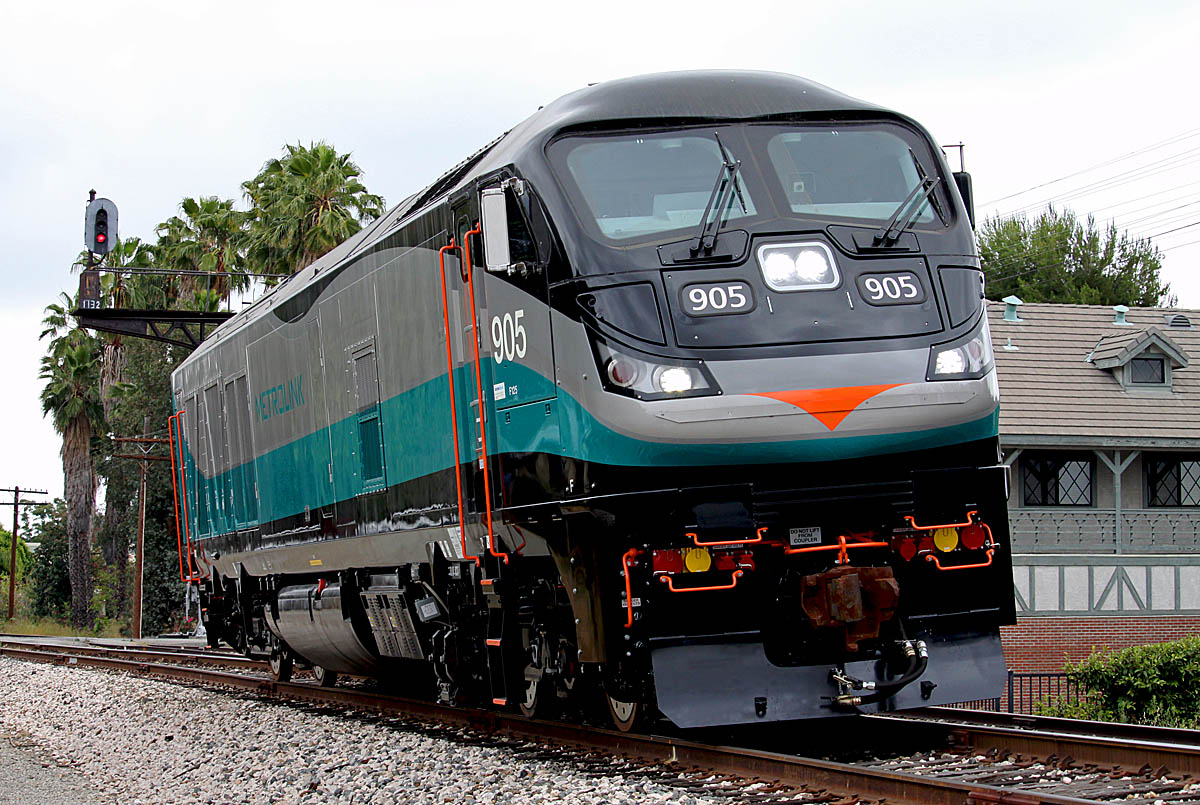The first of 40 locomotives rolled into service Thursday on the San Bernardino Line, Metrolink’s busiest line, which extends from Los Angeles to San Bernardino, Calif. These locomotives will rotate throughout the system to ensure that the entire region benefits from these new clean locomotives.
“These locomotives are a success story of what can happen when transportation agencies, elected officials and members of the community work together,” said Metrolink Board Chairman Andrew F. Kotyuk. “With over 30 letters of support and 11 funding sources, these locomotives are the result of a regional partnership that will benefit all of Southern California.”
These clean locomotives reduce emissions by up to 85 percent compared to the oldest locomotives operating throughout the region. They also have up to 64 percent more horsepower, which will enable Metrolink to transport more people reliably. They are enhanced with the latest positive train control and crash energy management technologies. Additionally, the new engines have enhanced on-board diagnostics and are expected to reduce delays caused by mechanical issues on trains.
“Metrolink connects Angelenos with communities across Southern California – we’re making that service more sustainable than ever before,” said Los Angeles Mayor Eric Garcetti. “These powerful, fuel-efficient locomotives will make travel across our region better for the environment and easier for riders.”
The entire fleet of new Tier 4 clean locomotives cost $279 million. Metrolink received funds from federal ($21 million), state ($132 million), regional ($110 million) and local ($17 million) governments. Air Quality Management District’s Carl Moyer and the State’s Cap and Trade programs were the two largest sources of funds.
“Reducing air pollution in California means aggressively cutting down on emissions in every industry,” said California State Senate President pro Tempore Kevin de León, D-LA. “Using funds made available by my bill, SB 535, these low-emission locomotives will help keep our environment clean and improve public health.”
Metrolink’s first Tier 4 locomotives have undergone rigorous testing and certification per Federal Railroad Administration requirements. Metrolink will add locomotives into service over the next months until all 40 are in service by the end of 2018.
— A Metrolink news release. Oct. 12, 2017.















You might want to delete the post just before this one.
Contrary to the claims in the first paragraph of this news release, these locomotives are not the first Tier 4 passenger locomotives in service in the State of California since the Siemens Chargers have already entered service on state-funded Amtrak trains.
One good thing is this is one place where that other locomotive maker has not put there foot on EMD’s neck & said we get the sale & not you.Been that way since 1983.
Progress Rail is building the F125’s at Muncie IN
Sounds like the performance of the EMD F125 is about equal to N. & W.’s 1950 4-8-4. (The emissions are probably better!)
Andrew Biemiller
And where are the F125s manufactured?
I’ll be curious to see how reliable they are as well. Been my experience, albeit with smaller engines, that all the emissions control stuff sounds great for politicians who want to blow on about how great these things are, but nothing but headaches that continually use up anything left over in the bank account.
I would like to know how they are doing. I’d heard allegations of unreliability, but it’s hard to tell if that is just typical teething problems common to new models.
Who built these puppies?
Looks like she’s listing to starboard, sir.
The “F’ on the cowl units stood for Full width (no walkways on the sides). I would say that applies here. It is true that in earlier eras “F” and “E” had other meanings.
In the mid-60’s, EMD’s designation for a cowl/cab unit was “F” as in F45, FP45, SDP40F, etc., but not certain if Progressive Rail is following EMD’s convention……
Woudda been nice to mention who built the F125 for newcomers to your site!
In this case I guess the F stands for 4 thousand horse power and the 125 stands for the maximum speed.
I saw these engines on a siding with access doors opened while leaving LA union station several weeks ago on Metro Link.
they look very sharp.
@John Sipple, it’s sitting on a super elevated curve.
How about a little credit for the company and its people that designed and built this new locomotive !!!!!!!!!!!
I was always under the impression that F was for Fourteen hundred horsepower, and E was for Eighteen hundred.
No Paul, “f” means front.
Since “F” stands for freight, the F125 should be FP125 or E125 in continuing EMD’s passenger diesel locomotive series.
Should I go down to LA and see if they let ME ride on this clean locomotive?